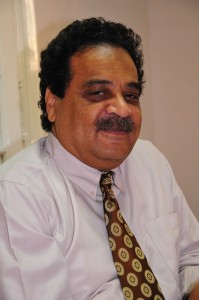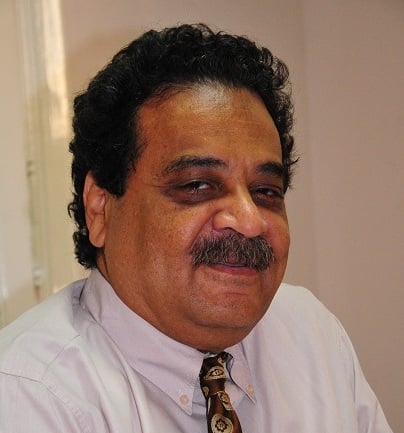
Prior to the 1970s, that which came to be known later as Islamic dress did not exist. The terms veil and veiled women were not used until the beginnings of the 1970s and the first appearance of the wave of what came to be known as the Islamic Awakening. Zainib Al-Ghazali, the only woman who can be said to have been one of the leading figures of the Muslim Brotherhood, wore modest clothing and ‘”shawls” in her court hearing during the 1970s. However, she was not veiled.
From 1919 to 1952, any young woman enrolled in school wore a modern ‘Francophone’ uniform. The debate that had arisen around the unveiling of women had ended and a woman’s clothing came to be tied to her level of education, employment, or urbanisation. Some of the female students in lower class neighbourhoods wore Francophone clothing while at university and the traditional head-toe wrap of Egyptian women while in their neighbourhoods.
In the beginning, the veil was not merely a piece of clothing but rather an announcement of identity, a gauge of affiliation, and a means to measure loyalty. The process of veiling female students was a goal of the Islamist groups in the universities.
The number of veiled students in a particular faculty or university was considered the standard for the success and strength of the Islamic group in that faculty or university. With the passage of time and the spread of the veil, the veil no longer was evidence of affiliation with the Al-Gama’a Al-Islamiyya or the Muslim Brotherhood – two principle groups into which Islamism was divided during the 1970s. And so there became a necessity for a more distinguishing mark of Brotherhood membership thereby leading to the appearance of the khimar, or full body veil.
This piece of clothing was not only an expression of the desire to be distinguished from others but also was a logical result of the continued fundamentalist dialogue or even fundamentalist conflict that led the Islamic Movement from extremist positions to even more extremist positions.
With the passage of time, Al-Gama`a Al-Islamiyya resorted to violence and its fundamentalist extremism, especially in regards to Islamist dress, approached that of more extremists and fundamentalist groups like Al-Jam`a Al-Muslimin – that was known by the name Takfir wal-Hijra –Al-Tawakuf wal-Tabayun, and Al-Showkiyoun through whom the excesses reached the point of forbidding vinegar and the sale of cucumbers with tomatoes.
Moreover, all of these groups soon or by the middle of the 1970s moved from the veil to the niqab, while the cadres of the Brotherhood – the principle trend in the Islamist Movement – were satisfied with moving from the veil to the khimar. The continued fundamentalist dialogue or even fundamentalist conflict, however, then lead to the appearance of the Salafi current which the security forces are said to have encouraged and helped spread as a counter to the armed Islamist groups.
Thus, the niqab began to be spread, propelled by radical fatwas that criticised all that had preceded them. The criticism extended to what was known as the Egyptian niqab as some of the Salafi sheikhs attacked the culture lead by Mohamed bin Salih bin Othmain in whose name there is a satellite channel that broadcast solely hadiths and fatwas.
Through several books and dozens of fatwas, these sheikhs attacked the coloured niqab for not preserving the blackness and emphasised that the legitimate niqab is that in which the garment descends directly from head to toe and not the two-part niqab in which the first part descends from the head and the second part from the shoulders thereby giving shape to the shoulders and causing this niqab to violate Shari’a.
Moreover, these fatwas attacked the niqab that uncovers the eyes even if glasses are being worn, for the true religion requires that the garment covers the woman’s eyes even if doing so inhibits her ability to walk. In this case, the solution is to drag her rather than uncover her eyes.
There was no restriction at all on the veiled women in Egypt. Even the armed forces and the police authorised a standardised uniform for veiled women in addition to the standardised uniform for non-veiled women. The hostesses of Egyptian Airways and female television broadcasters, in turn, were not exempt from this development. As for niqab-wearing women, they were permitted to work in different governmental positions but not in the army and police although debate continued around the necessity of confirming their identities upon their entrance to places of learning and some of the public institutions.
This whole time, the democratic forces emphasised that the right of any woman to dress in clothing she deemed appropriate was an individual liberty. These same forces, however, maintained that the employment of niqab-wearing women in certain positions required her to uncover her face. Examples of these positions included the human interaction with pupils in the case of a teacher, the sick in the case of a nurse or doctor, and viewers in the case of a broadcaster. However, these forces did not ban private Islamic educational, medical, or television institutions from employing niqab-wearing women.
In an equivalent manner, the forces of Islam made a large effort to veil women to the point that it was mentioned frequently that there were fronts lavishly paying famous female artists and other prominent women to veil themselves. In government offices, neighbourhoods, and places of learning, there was continual direct moral pressure from colleagues and neighbours, and even executives at work, until the veil in its various forms nearly became official dress for not only Muslims but Christians as well.
Instructions about the veil were issued to young Christian and Muslim girls in a number of schools and faculties especially those in the provinces. A friend working in education in one of the small, semi-rural cities told me that the she wore the veil in order to avoid the constant pressure and debate on the issue. Most surprisingly, Christians also veiled at school so that they would not face any discrimination due to their dress.
What is new now after the appointment of a member of the Muslim Brotherhood to the Ministry of Information is that Egyptian state television allowed the appearance of a veiled newscaster. This step comes after all we have recalled about the development of the state of dress in Egypt and its movement from one form of radicalism to another. The step also comes in the light of the closure of a satellite channel, the imprisonment and trial of a journalist, and the banning of prominent writers’ articles following the appointment of members of the Muslim Brotherhood to the press leadership positions.
In light of the developments that Egypt has witnessed over the four past decades, especially that which it has witnessed over the past four months, let us ask, is the appearance of a veiled newscaster a step towards deepening democracy and ending the discrimination towards such newscasters or is it a step informing us that we may witness discrimination against non-veiled women and perhaps even against those women who do not wear the niqab as well?




